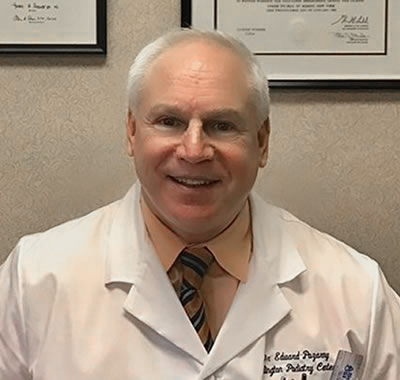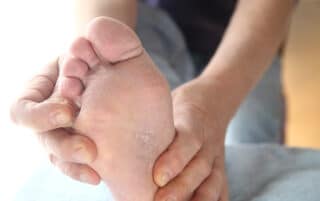
Arlington Podiatry Center
611 South Carlin Springs Road
Suite #512
Arlington, VA 22204

More Podiatry Foot Care Articles
Treating the Most Common Fungal Problems

A fungus is a common mold that thrives in dark, warm, moist areas. On the feet, it can grow on and between toes, as well as on soles and toenails. Fungal problems can be a result of environment (socks, shoes, heat and humidity) or weakened immunity (diseases such as diabetes). If fungal infections are untreated, they can develop into serious secondary bacterial infections, which may require antibiotics to treat. The fungal problems seen most often are athletes foot and fungal nails.
Athletes foot is a chronic infection caused by various types of fungi. It is often spread in places where people go barefoot, such as public showers or swimming pools. The condition ranges from mild scaling and itching to painful inflammation and blisters. It usually starts between the toes or on the arch and may spread to the bottom and sides of the foot.
Athletes foot can often spread and cause fungal nails. Artificial nails, nail polish or injury to the nail can also lead to fungal nails. Fungal nails may become thickened, inflamed or sensitive, and turn unnatural colors.
Treatment Options
The first step in treating a recurring fungal problem is to have an evaluation by a podiatrist. During the foot exam, your podiatrist will check for breaks in the skin, growths and odor (which can be a sign of bacteria). Your skin is also checked for flaking or scaling and your nails are checked for color, thickness and inflammation.
Your podiatrist may take a culture from the infected area. This test is helpful in determining the type of fungus you have and can also determine the cause of your fungal problem.
Depending on the type of infection you have, various kinds of medication may be used in treating your fungal problem. Successful treatment usually involves a combination of medication and self-care.
If your athletes foot is not serious, over-the-counter and prescription powders, lotions or ointments can often help treat scaling, itching and inflammation. Foot soaks may help dry excessive perspiration, but talk with your podiatrist first. If your athletes foot doesnt improve, your podiatrist may prescribe stronger medication.
Since fungal nails are usually more resistant and more difficult to treat than athletes foot, topical or oral antifungal medications may be prescribed. Secondary bacterial infections may require antibiotic treatment. Debridement may be suggested and involves trimming, filing or grinding away the diseased part of the nail. Permanent nail removal is another form of treatment.
Prevention
Your daily habits play a big part in helping to prevent fungal problems. Follow these suggestions to help avoid fungal problems:
- Always dry your feet carefully after you bathe or shower.
- Avoid fungus-causing perspiration, alternate your shoes regularly.
- Try to wear shoes made of breathable materials like leather or canvas.
- Change your socks often.
- Wear sandals or thongs in public areas such as pools, showers or locker rooms.


















